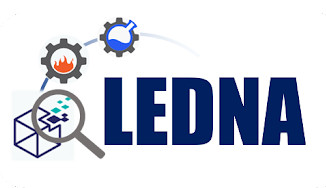The experimental devices under development at the LEDNA laboratory are designed to characterize nanoparticles in real time and in situ. Two main research topics underpin these developments. The first concerns atmospheric monitoring of these nano-objects (metal oxides, SiO2, etc.) for environmental and health safety purposes. The second involves controlling the production of nano-particles, such as those produced at LEDNA by laser pyrolysis (Si, FeCN, Li2TiO3, etc.) or at LEEL by flame spray pyrolysis (carbon-coated iron, carbides and nitrides).
Of course, depending on the topics mentioned above, the constraints and performance requirements are not the same. For example, in the case of air quality monitoring, the main requirements are very low detection limits, particle number concentration and size distribution. For production line characterization, it is the ability to identify and quantify numerous elements in a LIBS spectrum and the size distribution that will be required. Thus, the experimental developments are adapted to the objectives sought. Nevertheless, all these devices are based on the use of an aerodynamic lens and laser-induced breakdown spectrometry (LIBS).
Characterization of nanoparticles in the gas phase:
The nanoparticle source (synthesis reactor, ambient air, etc.) is continuously sampled using an aerodynamic lens. At the lens outlet, the aerosols present in the source form a jet under vacuum. This enters a second vacuum chamber, where the particles are irradiated by a highly focused laser (a few GW/cm2), generating a plasma. The atoms and ions in the plasma de-excite, emitting their own lines. The photons are collected, filtered and detected by a spectrometer (or an optical filter followed by a photomultiplier). Finally, an electronic system selects and processes the signal before recording it. The whole system operates at high speed, several tens of kHz. Statistical analysis of the photons detected enables measurement of the numerical concentration and elemental composition of the irradiated particles.

Very general principle of Laser-Induced Breakdown Spectroscopy (LIBS) :
Laser-induced breakdown spectroscopy (LIBS) is an analytical technique that belongs to the atomic emission spectroscopy technics. In brief, a highly energetic laser pulse (typically ns) is focused on a target material (Figure 2 a)). At first order, it is the energy of the laser pulse deposited on the surface of the material that causes a sudden rise in its temperature. If the laser is correctly focused, the surface density of energy deposited in the material exceeds the ablation threshold (a few GW.cm-2), leading to vaporization of the irradiated surface (Figure 2 b)), followed by the formation of a plasma (Figure 2 c)) and a crater on the ablated surface. As this first stage is almost instantaneous, the vaporized material is always irradiated with the same laser pulse (ns). In this way, the vaporized material absorbs part of the laser radiation, allowing any particles pulled off from the material to continue vaporizing, and free atoms to be excited or even ionized.
A micro-plasma composed of neutral atoms, slightly ionized atoms (usually once or twice) and electrons is generated. At the end of the laser pulse, the plasma continues to expand and thermalize. Typically, the plasma temperature is of the order of 15 000 K and its volume of the order of 10-3 cm3. To confine plasma expansion and facilitate thermalization, analyses are carried out at ambient pressure, either in air or under an argon flow. Subsequently, the plasma constituents de-excite, emitting photons that are characteristic of the plasma elements and enable them to be identified (Figure 2 d)). These photons, once collected and detected according to their wavelength, constitute an atomic emission spectrum.
Atomic spectrum analysis can be used to identify the elements present in the plasma, and even to determine stoichiometry.





